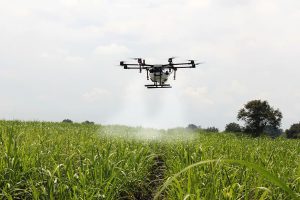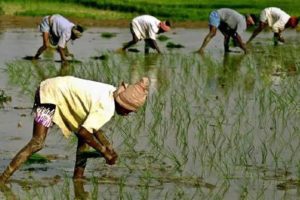PMGSY was rolled out in 2000 to provide access to all-weather roads in 1.78 lakh rural habitations across the country.

A recent independent World Bank assessment of the Pradhan Mantri Gram Sadak Yojana (PMGSY) rural roads programme meant to establish ‘farm to market connectivity’ shows that the PMGSY roads, in fact, “triggered a shift from farm to non-farm employment” in the habitations studied between 2009 and 2017 as with roads in place, people chose employment opportunities outside their habitations over expanding their farming.
“As a consequence of PMGSY roads, the rate of primary employment in the non-farm sector increased by about 12 percentage points in the habitations studied. This increase represents a 33 per cent increase over the average share of non-farm primary employment in 2009 in habitations that were connected after 2009,” it said.
The study also shows it is the men that switch to non-farm employment while women step in to take care of the farms. The entry of women into the workforce, the report notes, is the main reason for the 5.5 per cent increase in employment in connected habitations. Moreover, the shift to non-farm employment was found to be more pronounced in hilly areas.
PMGSY was rolled out in 2000 to provide access to all-weather roads in 1.78 lakh rural habitations across the country. The study states that by December 2017, 1.59 lakh habitations were connected at a cost of $ 27 billion with some of the financing also coming from the World Bank. The World Bank impact evaluation of PMGSY applies panel data and difference-in-difference methodology for 2009 and 2017 household and habitation level data from Himachal Pradesh, Madhya Pradesh and Rajasthan.
“The results on employment and agriculture indicate that improved connectivity in rural areas mainly leads people to look for employment opportunities outside their habitations instead of improving and expanding their farming to take full advantage of improved access to input and output markets…However, if India wants to make more efficient use of agriculture land, it needs complementary programmes to support the development of agricultural value chains.” It says such programmes should examine the entire value chain, adopt efficient farming practices, and ease constraints on agriculture logistics.
The World Bank study also shows a positive impact on child immunisation, childbirths in hospitals, and schooling of both boys and girls in rural areas. The share of babies delivered at home reduced by as much as 30 per cent in the connected habitations with the decrease being greater in habitations that are more remote from urban agglomerations. It showed 0.7 more years of schooling in 2017 in the connected habitations and also showed that young children were less likely to fall ill owing to vaccination take-up in children under 4 years increasing by 15 percentage points.
source: Indianexpress
Link:https://indianexpress.com/article/india/world-bank-study-on-pmgsy-rural-roads-scheme-triggered-shift-from-farm-to-non-farm-employment-5840932/




